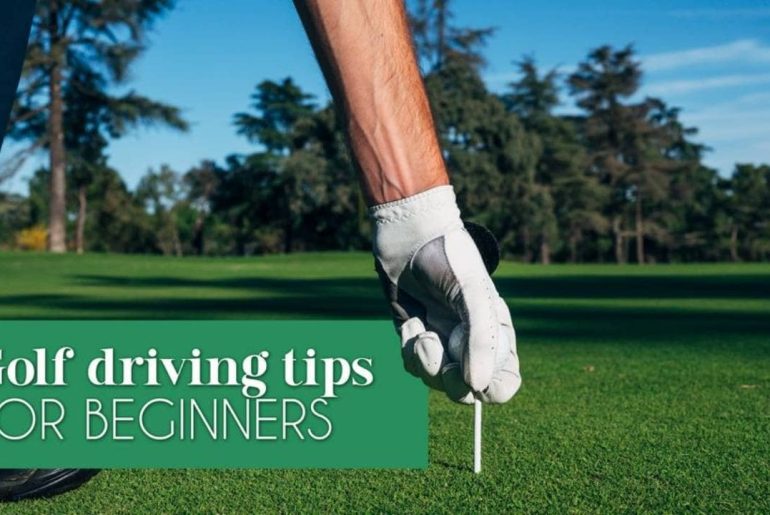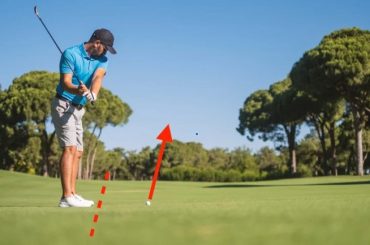The driver is a very important club on most par four and par five holes. This hole playing shot creates a scene for playing the rest of the hole. It can be a break or make club. Having this in mind, I decided to provide you with the some of the best tips of driving a golf ball.
A driver is the club that is the longest in the bag. It should be the club you can hit the longest. Good hitting the driver will help you to play a hole well. The driver is a big problem for many beginners. Understanding the basics of a golf driver will make you a better all-around golfer.
Topics to be covered in this article on golf driver tips for beginners include: But it would have been foolish to go out and dress like that.
- How to get ready to hit a long drive.
- How to get your body more tuned in to hitting the driver.
- What impact your choice of the driver may have on the result of your drives.
- The impact of the type of a golf ball on the result of your drives.
- How to train the right drive.
- What is the way to get more speed from rear driver hit.
- Some common driver errors to eliminate.
Let’s dive in!
25 Golf Driver Tips for Newbies
The next 25 golf driving tips for beginners encompass methods of choosing the right driver and golf ball for a beginner and how to practice a golf drive.
1. Grip Neutral For Straighter Drives
Your hands are the only link you have to the club itself. Being aware of the proper way of holding the driver is a good starting point for the beginner. The straightness of your shots with the driver will be directly affected by your hand placement.
What you want as a newbie golfer is a nice neutral grip. This is dual-hand grip. There is a V formed by your thumb and pointer finger. If you are a right-handed golfer, both your right and left hand should be pointing over your right shoulder. If you are a left-handed golfer, they will point over your left shoulder.
Pro Tip: A lot of new golfers tend to hold the golf club with what is called a 10-finger, or baseball grip. I would suggest you to stay away from this. The arms need to be linked together and work as one.
2. Treat Your Driver As A Baby Bird
The proper grip is one of the key advices for the golf ball driving. The pressure you put on the club is very crucial. Sam Sneed, one of the legendary figures in golf, expressed of the grip that “You want to hold the club as if you had a little baby bird in your hands”.
The idea here is that you want to grip the club tight enough to prevent it from flying out of your hands but loose enough not to be a death grip.
Pro Tip: Grip pressure may also be looked at as on a scale of 1-10 with 1 being barely holding the club and 10 as gripping violently. In this case, you want to hit 4 to 5.
3. Set Feet at Least One Shoulder Width Apart.
One of the hitting driver fundamental is your feet.
You need to achieve a good wide base in driver shots. You want to have your legs positioned at least shoulder-width apart in order to accomplish this.
Pro Tip: I like going just slightly beyond shoulder width. Such wide and stable base enables you to be in more balance.
4. Turn your feet out a little
Hip and shoulder rotation in the backswing and through in the downswing is what makes you hit good drives. To alleviate this, just point your toes slightly out.
How To: In order to do this, you should slightly bring your front foot to the target and your back foot away from target. The front foot should be a little more opened up than your back one but not a whole lot.
5. Ball Off Your Front Heel
Your golf ball should be aligned a few inches outside from the heel of your lead foot. This will enable you to hit a little more higher on the ball than what you would do with all your other clubs.
How To: To train this on the range use an alignment stick. Put it on the ground and roll it off your forward heel at the place you would tee the ball.
6. Tee the Ball More Up High
A lot of beginner golfers often tee the ball up very low with the driver. You have to chip the ball much higher than you would anticipate.
Studies have shown that teeing the ball up at 1.5” vs. 0.The 5” increases driver carry distance by about 14.5 yards.
Pro Tip: A good guide is to have the equator of the ball even with the top line of the driver.
7. Drop the slide hip to the fairway at setup.
Staying with that notion of slightly raising the ball with your driver. You will also want to bump your leading hip just a bit toward the fairway. Essentially, what you do when you do that is put what is known as the secondary spine angle in its proper place.
Your primary spine angle is your spine coming to you ball in setup. Your secondary spine angle is your spine starting to angle away from the target a little.
8. Set up with your club a couple of inches behind the ball
This golf swing technique for driving will help you produce the right launch conditions with the driver.
Shifting the clubhead away from the ball by 2 to 3 inches will make you tend to sweep upwards on the ball with your driver.
This little talked about trick has done wonders with some of my students… and me!
9. Elevate the Driver in Setup
This is done occasionally by players on the PGA and LPGA Tour’s. This is straightforward. During golfers ground their driver behind the ball in setup, they barely push the sole of the club into the ground.
Why Is This Important? The first reason is that you may catch the club a bit on the ground at the beginning of your backswing. The second reason is the fact that you should not ground your driver at set up as you will create tension.
10. Foot Awareness in Setup
Your feet are active throughout the full golf swing. Once you are set up with the driver, you should feel that you are balanced in the right place, that is, you center of gravity. Not just with your feet but your whole body. But that all begins in the feet.
You want to get a sense that you are focused on the balls of your feet, close to the bottom of your laces of your shoes. Neither too much on your heels nor too much on your tiptoes.
Pro Tip: You also want your lead and trail foot pushing the ground with equal pressure. Basically a 50-50 distribution.
11. Shoulder Turn and Chin Up
Just before entering the swing itself, I have one last setup tip. Make sure your chin is up and not down in your setup. However, too much of that in a literal sense, is something that will restrict your shoulder turn back.
The concept of keeping your head down is more of keeping your head still and not necessarily down.
12. Initiate the Club Low, Slow, and in One-Piece
When you start to take the club back in your backswing, you should feel that the club and arms move together as a single unit. The shoulders will be the locomotion of this one-piece take away idea. You must feel like the shoulders are returning back, with a stable backhand and the arms and club all in one line.
You need to take the club back slow and fluid. By doing that, you would like to take the clubhead back low and avoid raising it.
13. Take wide with your takeaway.
Next, moving on from the starting one piece takeaway, you need to keep rotating back with the hips and shoulders. You want to fan out as you do so and keep moving back with your hands and the club.
While you stay relatively centered with your sternum and spine and turn around it, you should project your hands as far away from your body as you can. This creates width. A reasonable width promotes a lot of speed in your downswing.
14. Tilt Your Hips 45 Degrees
Rotation of your hips around your core should be about 45 degrees. This is the perfect level of hip rotation. Try to rotate your hips as much as possible about this specified level of rotation.
A lot of burgeoning golfers tend to slide back or sway. This is a transversal movement of the body, here, the hips. To understand a good hip turn, you would like to have the feeling that your trail hip goes behind you and your lead hip goes to the ball.
15. Turn Your Shoulders 90 Degrees
Your shoulder should come around 90 degrees back. An excellent thing for that, in order to achieve a correct sensation of a good shoulder turn, is the notion of getting your back towards the target when you are at the top of your backswing.
The driver swing strength lies on good separation between your hips and shoulders. By the logic of your hips’ turn 45 degrees and that of yours shoulders 90 degrees. That is a good “coil”-the 45 degrees of separation between both.
16. Correct Downswing Transition and Sequencing
You should properly move down from the end of the backswing to enter into the ball at the impact. The correct way to do this is through knowing the right sequence of the parts of the body to move during the below swing.
The right sequence of events from the top in the swing and down should be unwinding and turn of the hips into your lead side. After that goes your upper part of the body.Then your hands follow. With the swing only around 1.5 seconds, this is pretty fast.
17. Swing Right
The information is for right-handers. You want to feel that the club is coming up from under or inside your swing plane as you come down from the top of the swing. The most effective way of making beginners grasp this concept is to imagine that you are swinging towards the right or first base.
For our friends in the left-hand side, simply reverse that idea.
18. Hips and Shoulders Open through Impact and Follow-Through
A key tip for the novice golfer looking to hit great drives is to always keep turning your body. By both impact and follow-through. A lot of golfers have a problem that the body slows down in its rotation during the downswing, at impact, and through the finish. Many beginners, and some better players, frequently let the arms continue on, and lead the swing.
In the backswing reverse, you should feel your lead hip moving back. The trail hip will move forward towards the target. Same thing with your shoulders.
Pro Tip: A good thought to have to continue in the move and rotation is to bring your belt buckle or belly button towards the target and lastly lead with your chest.
19. One should regard the back of their lead hand as the clubface.
In hitting straight shots with the driver, or any club for that matter, the lead wrist and hand do a lot of work. You should consider the rear part of your lead hand as the face of the club. It goes where your clubface goes.
You should also have the back side of that lead hand flat and pointed to the target at impact. The cupped or extended lead wrist is common to many golfers. This exaggerates the loft and also prevents the clubface from being square at impact.
20. Free Your Hands at the Target
Letting go the club is a sensation of casting the club towards your target. At approximately 45 degrees after contact, your arms and the club shaft should align.
By this time, you should feel as if you are throwing the club at the target as you keep turning to your finish.
21. Have a Good Solid, Balanced Finish
This trick is straightforward but very powerful. A strong, well-centered follow-through completes a good swing as a whole. It does not ensure it, but it definitely aids it.
22. Master Fitness for Improved Drives
The success of a golfer to hit good drives is highly bound up on body movement. Development of flexibility more than strength is crucial.
Below is a sample of a great flexibility exercise from my buddy Scott Shepard. Scott has twice been listed as a Golf Digest Top 50 Fitness Instructor.
What you need: PVC or a wooden dowel rod or your golf club.
Torso Rotations
Torso Rotations: Stand with feet shoulder width apart and place a PVC or golf club across the back of your shoulders. Turn your body slowly to the left and right while your feet are firmly touch to floor. Perform 10-12 reps on each side.
Hip Post Stretch
Hip Post Stretch: Place your feet together and step with your left foot forward. Bend the left knee and use the right hand to support the left knee. Extend your left arm overhead and across your body, and feel the stretch along your torso and hip. Do the same for 10-15 seconds and then change the sides and repeat.
23. Select The Appropriate Driver and Ball
Aspects to look into with a driver are the club head with the shaft. The shaft is important. You have to play a shaft that is suitable for your swing speed. Golfers typically get a club from the shelf, which is not right for them. The thing with beginners is that they just do not know.
Regarding the golf ball, an average golfer needs a ball more on distance and reducing side spin. Search for a Surlyn, 2 or 3-piece ball.
24. Drives Practice Patterns
Picking targets is one of the good practice hints for beginners.
To practice with your driver on the range, pick targets that will outline the left and right sides of your fairway. In between those left and right barriers you will place a midpoint target.
While practicing your drives, hit balls in sets of 10. Target the number of drives that out of those 10 that you would like to hit the fairway.
Ensure that you perform your regular pre-shot routine which each shot. If you don’t have a pre-shot routine, you must develop one.
25. Driver Speed Practice
To get more distance, more speed must be achieved. The speed part one is learning how to do technique properly. The former advices will assist with that.
Apart from that, you have a large number of swing speed training aids which are available in the market. Among my favorites is Aero-Swing. It is a resistance trainer. By air resistance, you can also help to pick up speed.
Common Driver Errors among Beginners
After considering driving tips for beginners in golf, there’s a big thing to consider: Error-shunning. Here are a few of the biggest mistakes I see beginners make when it comes to hitting the driver: This situation does not only stress the people living in the area, it also affects all those who visit the area.
Too Wide of a Stance
It’s a fact that you need a good wide base in setup, but getting too wide in your stance is going to restrict your ability to rotate. Ensure your feet are at shoulder width apart or a bit wider.
Bad Ball Position
A lot of beginners hit the ball too far back in their stance. This prevents a golfer from teeing the ball slightly higher. You tend to hit shots too low and cannot benefit from the power of the ball when it is too far back.
Helping the Ball Up Too Much
Though, you are supposed to swing a little up on the ball with the driver, I often see golfers doing this the wrong way. Here the most common fault is that the hands go “flippy” at impact. This occurs when that lead wrist is not flat as you come into impact.
Little Body Rotation
Beginning golfers usually tend to utilize much arms, pick the club up, and swing the arms through without body rotation. The crucial part is the rotation of the hips and shoulders and the counter to the turns in both.
Improper Speed Application
Speed in the golf swing needs to be collected back and then released gradually through impact.
A lot of beginners jerk the club way too fast in the backswing. This is a power drain at the very start. Others, on the other hand, attempt to pound the ball from the apex of the arc. This puts the hands out of phase and again results in a power leakage.
In Summary
Every golfer aspires to hit the ball straight and long with the driver. So much so, that if you go to any driving range right now, most golfers will be hitting the driver. It’s inevitable.
A golfer new to the game is the best time to really invest on learning the proper techniques in hitting the driver.
Hopefully, with these golf driver tips for beginners you’ll be able to hit some incredible drives!





